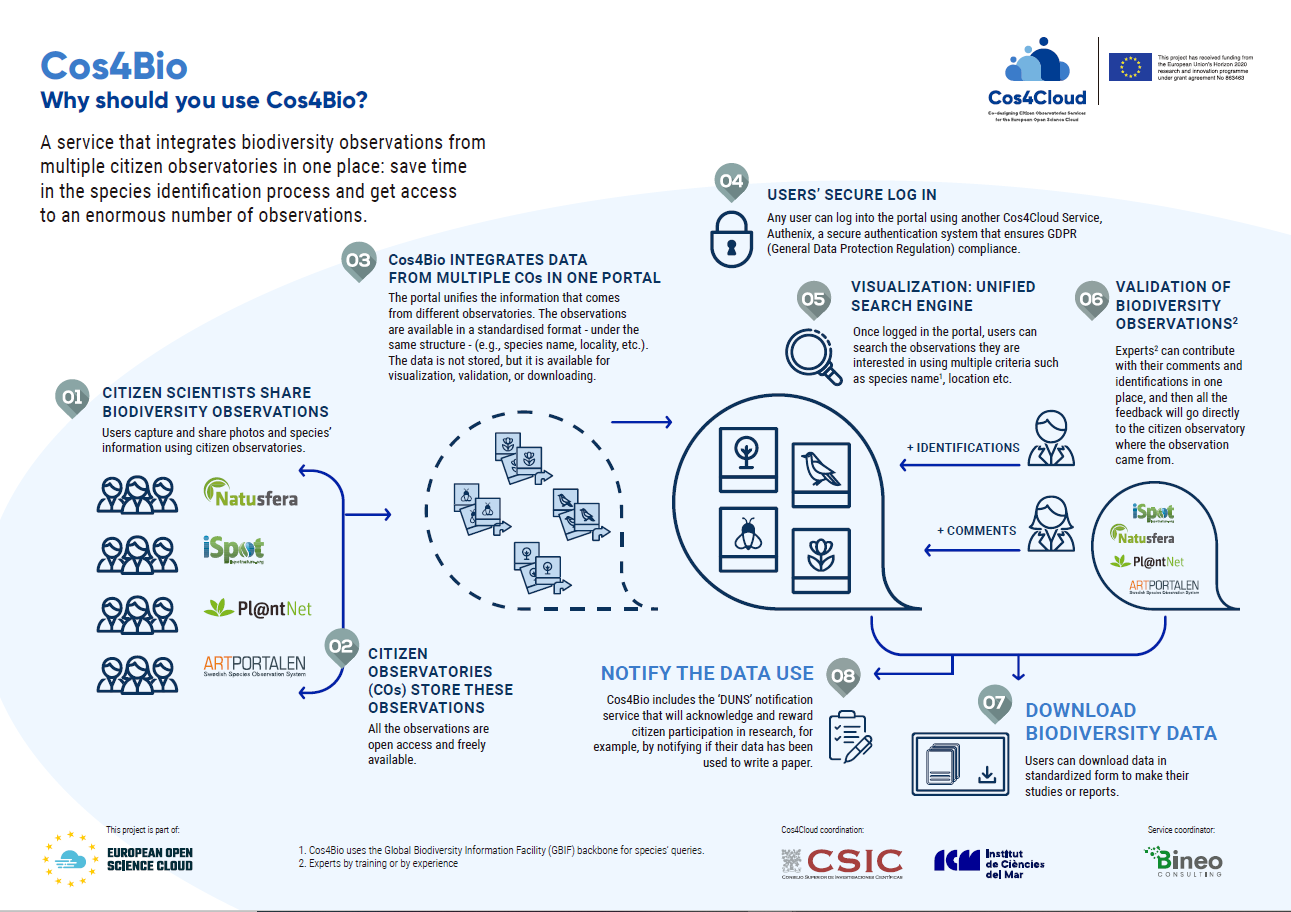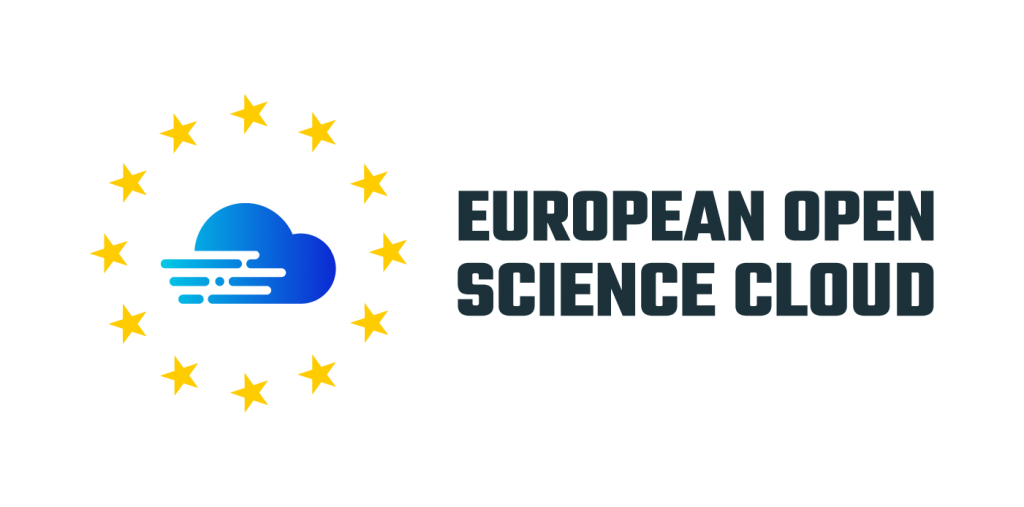Cos4Bio: A service that integrates biodiversity observations from multiple citizen observatories in one place: save time in the species identification process and get access to an enormous number of observations.
Description of the service
Cos4Bio is an online platform that integrates observations on biodiversity from various citizen observatories, potentially an enormous number of observations that are of interest to the expert community.
Development & functioning :
The portal will allow citizen science experts to view and identify all the observations in one place. Once identified, the observation returns to the citizen observatory portal where it was reported for final validation according to their specific algorithm. For example, if a citizen science expert identifies a species through the portal and this image comes from Natusfera, it will automatically notify Natusfera of the identification. However, the citizen observatory will do the final validation according to its own specific algorithm. For example, some algorithms require a certain degree of expertise to validate the species’ name, but other algorithms ask for many identifications of the same observation to validate it, etc.
Furthermore, on the expert platform, users will be able to search observations from other citizen observatories like ArtPortalent, iSpot, Natusfera and PlantNet in order to identify and download them for their research.
Example: If you are a scientist and want to carry out a study on the distribution of x organisms in your country, you could download all the organism observations from the portal regardless of the citizen science observatory or country they come from. Just as simple as that. You get loads of data from a huge area of coverage.
Artificial intelligence (AI) – based automatic validation tools will also play an important role. This will help citizen science experts who validate the observations on the expert portals identify the observation.
So, the expert portals will take advantage of artificial intelligence. At the same time, artificial intelligence will improve. The more information it has, the more it can learn. Portals like ArtPortalent, iSpot, Natusfera and PlantNet, whose main goal is identifying and downloading data for their research.
Innovation for citizen observatories:
- Reduce the time that citizen science experts spend on the identification process and therefore on citizens observatories.
- Allow users to download observations from one portal without forgetting that the platform will recognize and notify each observation’s authorship.
- Train much better algorithms than if we have separate databases with only the partial information of a single citizen observatory.
EOSC Marketplace:
Use it!
Guidelines and code
EOSC in practice story:
How to Log into Cos4Bio?
Watch the video!
Coordinator:
Related news:
Related events:
Questions & answers
- Will Cos4Bio be able to integrate environmental observations or readings from citizen observatories other than those participating in Cos4Cloud?
Yes, but it is outside the scope of the Cos4Cloud project. More observatories will be added depending on how the service evolves once the project is finished.
- Which criteria for species names does Cos4Bio use?
Cos4Bio uses the Global Biodiversity Information Facility (GBIF) backbone to unify the list of species from different observatories. The Darwin Core standard is also used as the biodiversity standard in GBIF to share biodiversity information.
- Can I download the images from Cos4Bio?
No, due to copyright issues, but when downloading information, you will be able to see the link to the image on each portal. Furthermore, different types of filters (or search criteria) can be applied to one or all the observatories at the same time. For example, a CSV file can be downloaded with the information on all the species you are interested in from a specific region, searching all the observatories that are part of Cos4Cloud from a single place, Cos4Bio.
- Will I be able to see all the species' validations, both from the observatory and on Cos4Bio?
Yes, all of them.
- When an expert validates my observations, will there be a mechanism that tells me what level of expertise they have?
We still have to define what an expert is on Cos4Cloud. For now, the answer would be no.
Co-design highlights
Most of the attendees who answered the post-event survey would recommend the co-design session to a friend.
All the attendees who answered the post-event survey found the ‘Miro’ tool very easy to use.
Want to join the co-design community?
Interact and meet other professionals working in your field
You will be able to network with other professionals and projects.
Help boost the functionalities of citizen observatories
For example, improve species identification with artificial intelligence, data integration from various citizen science platforms, etc.
Be an active part of the open science movement
Cos4Cloud's technical services are open source and are intended to be adapted and improved by the community involved.
Learn about citizen science, technology, and co-design
Also, we will tell you how we have applied co-design feedback in developing the service at the end of the project.




















